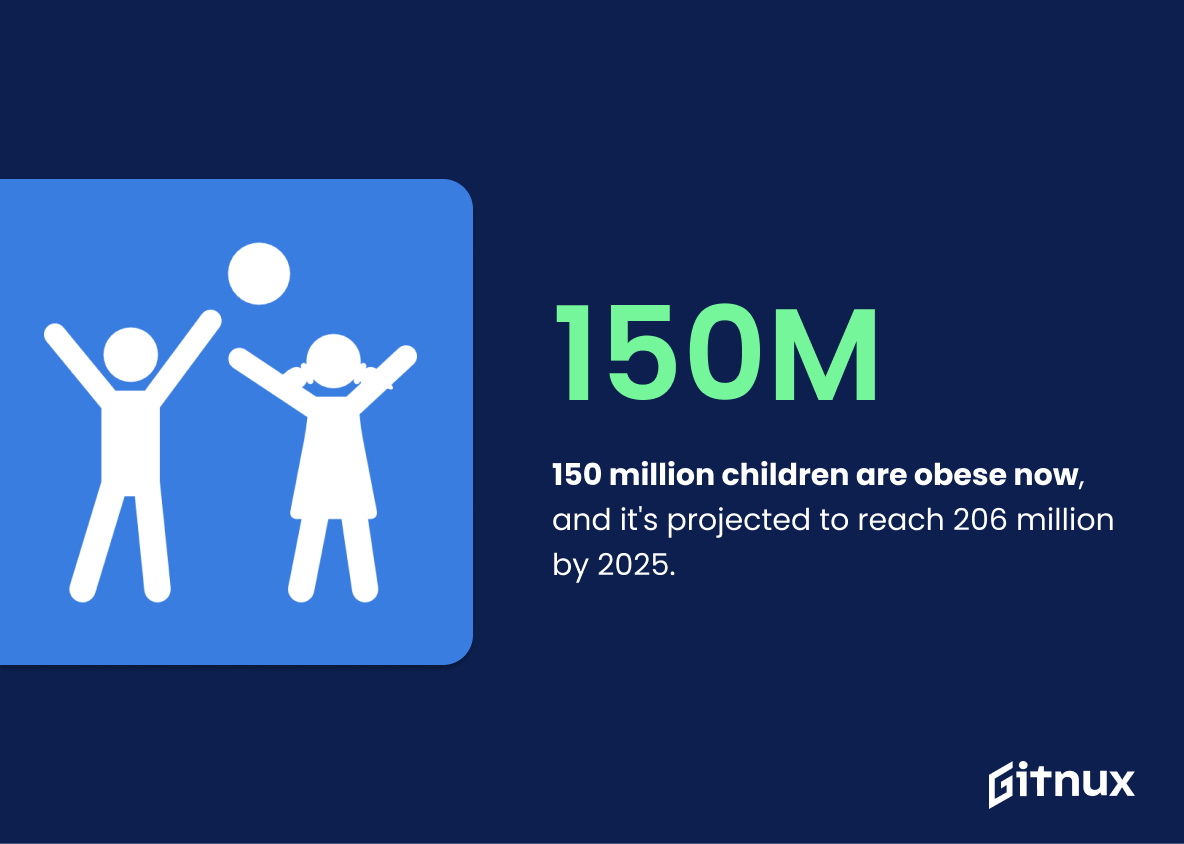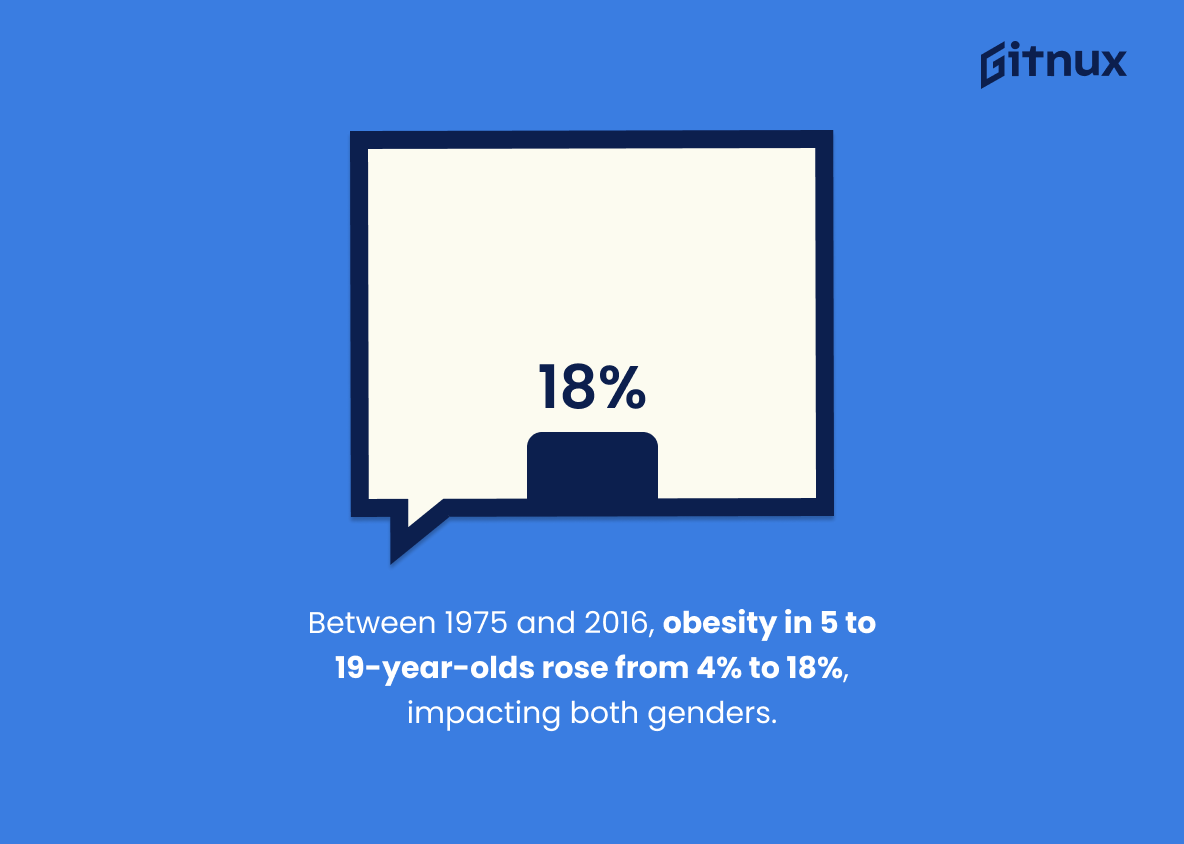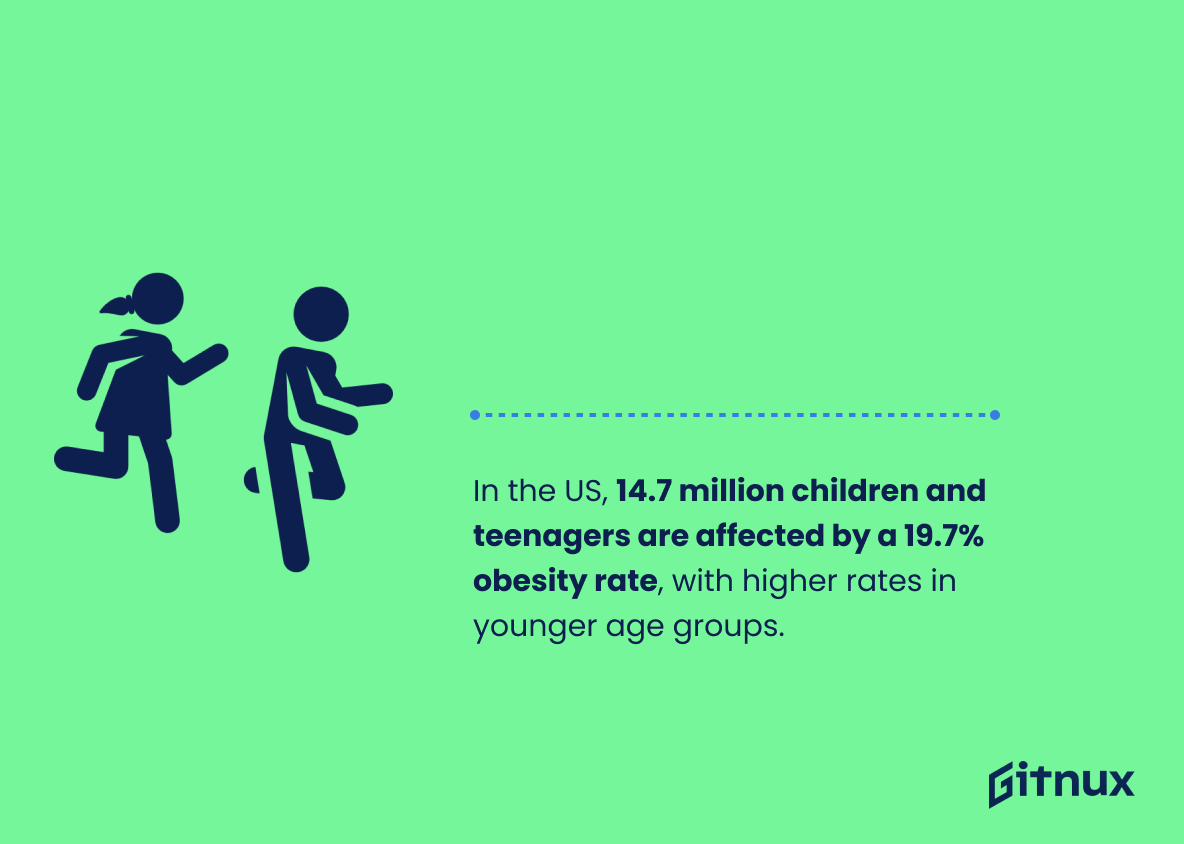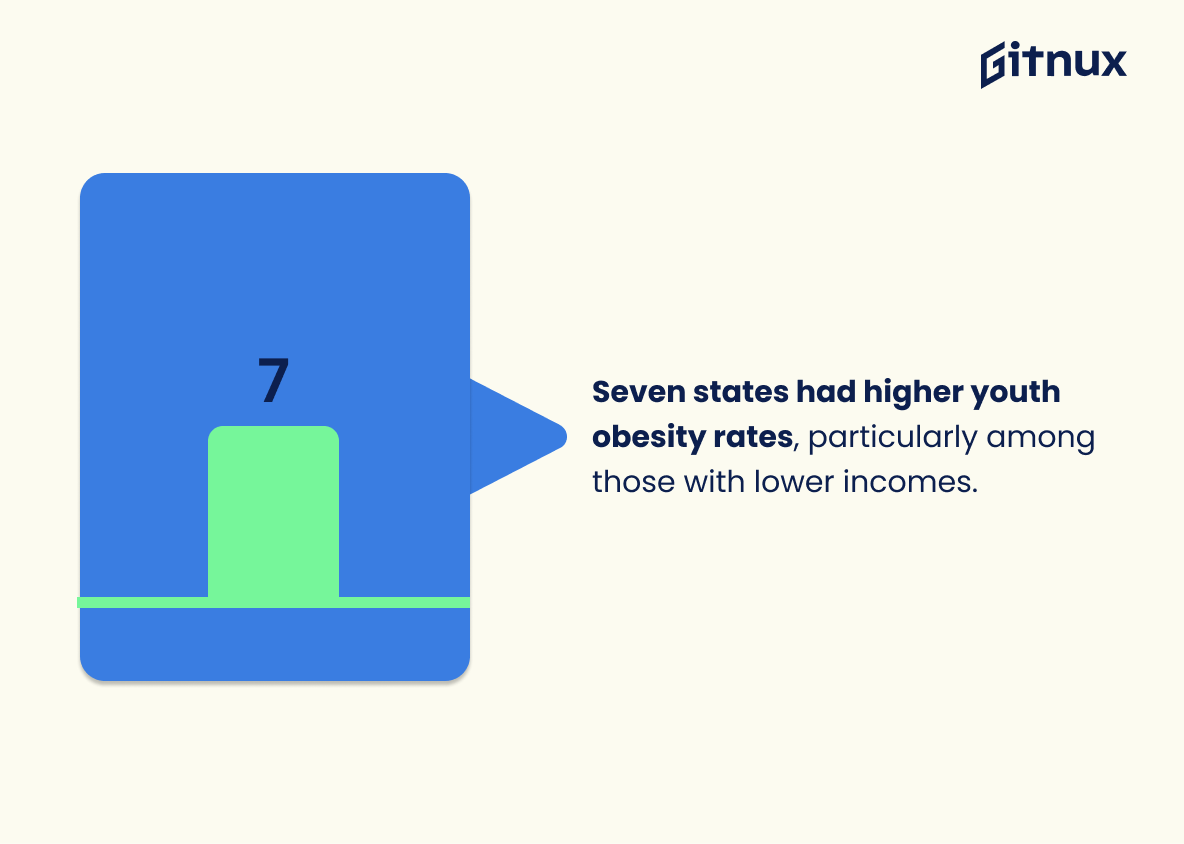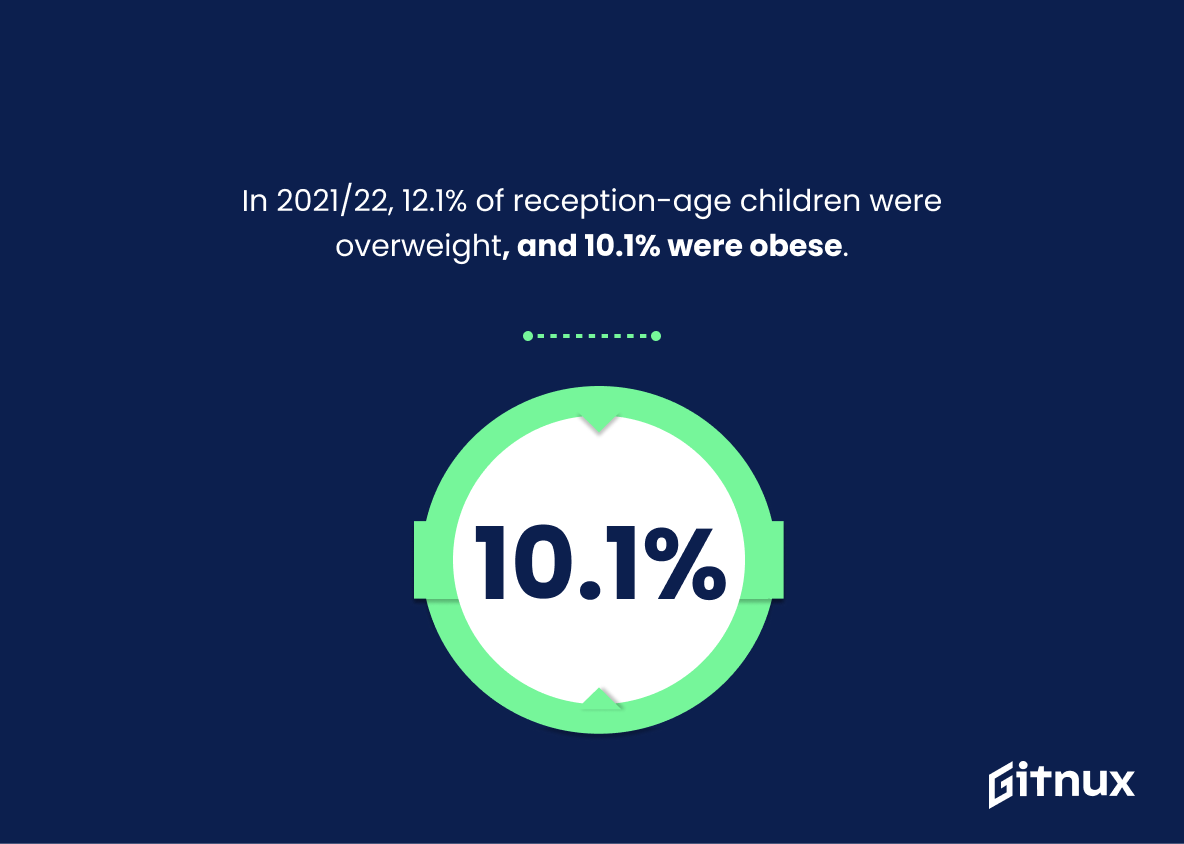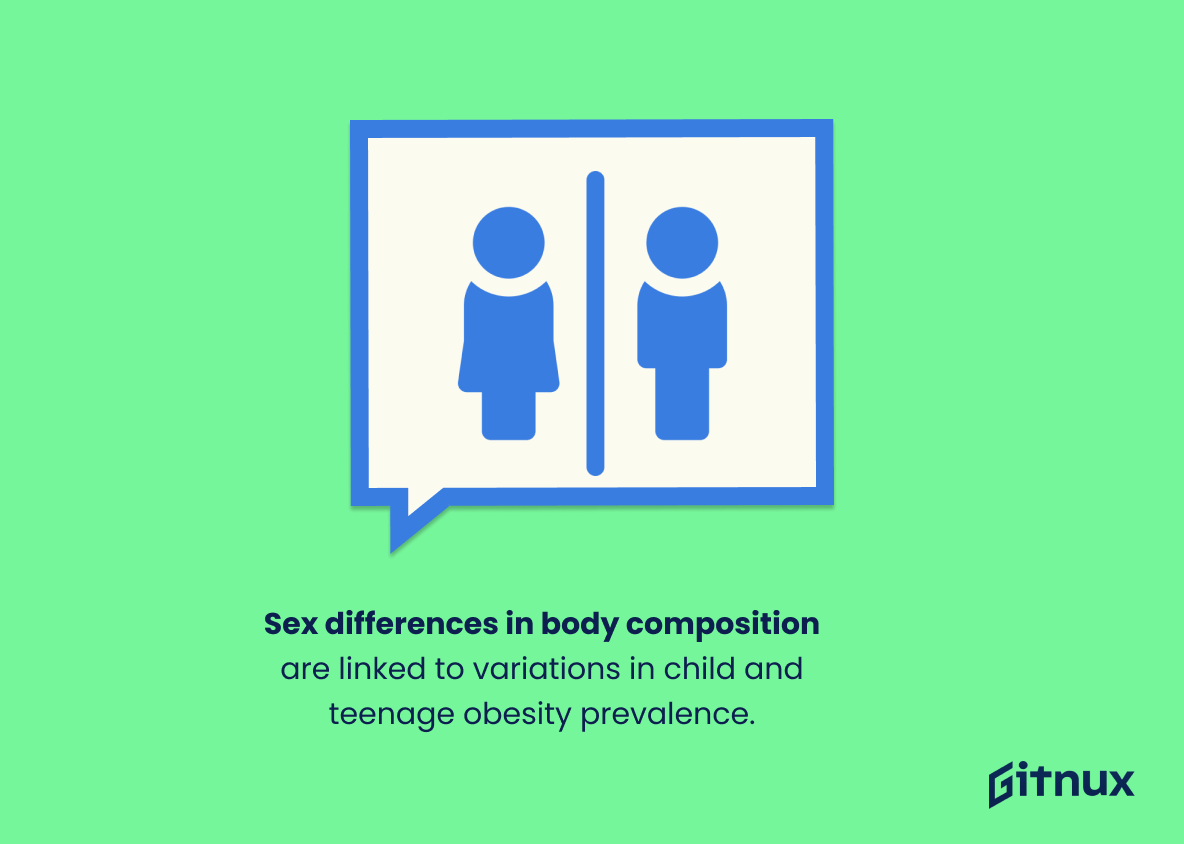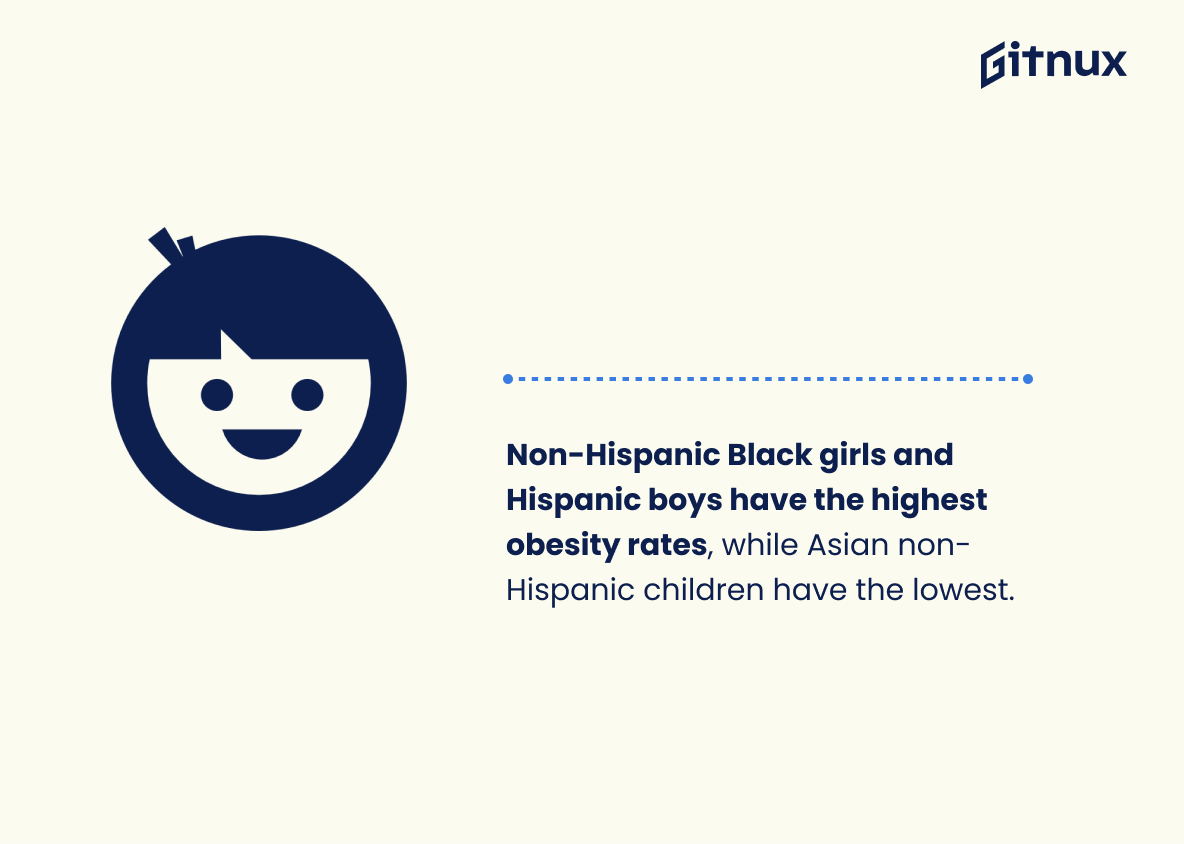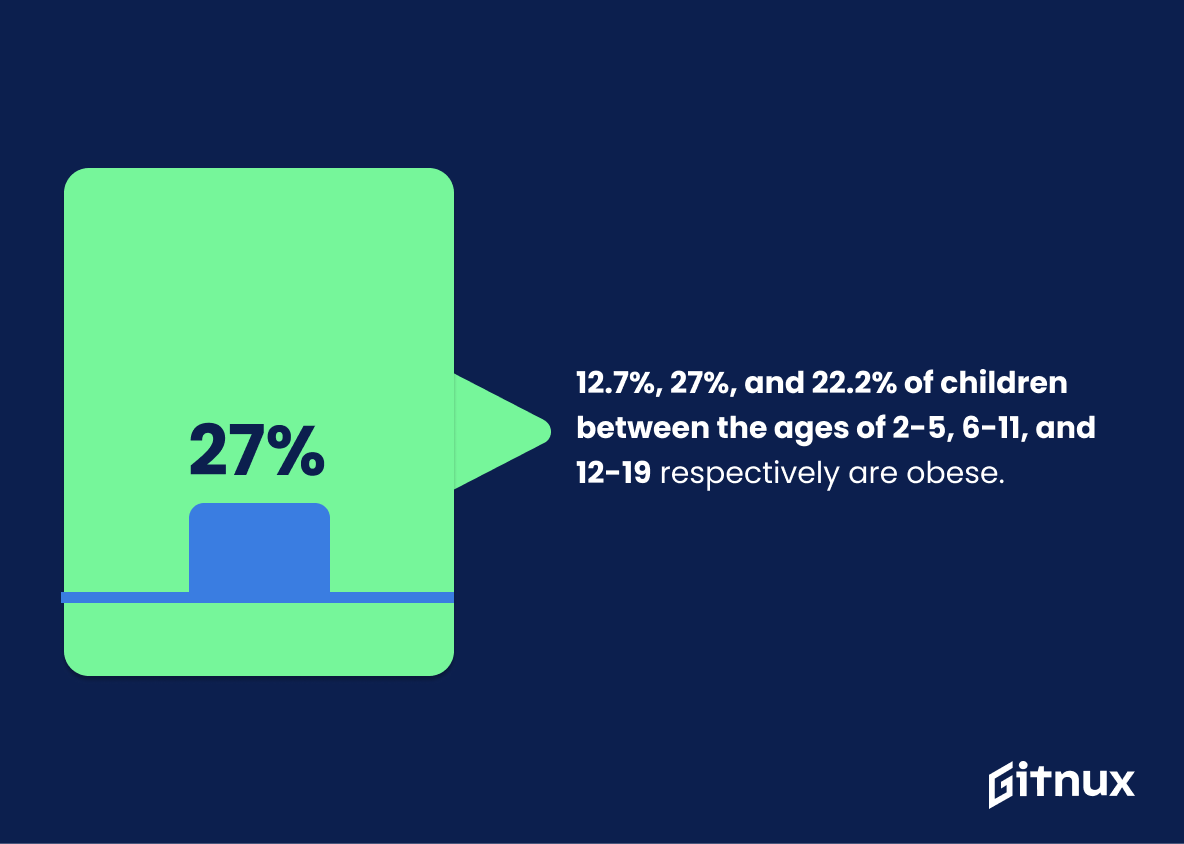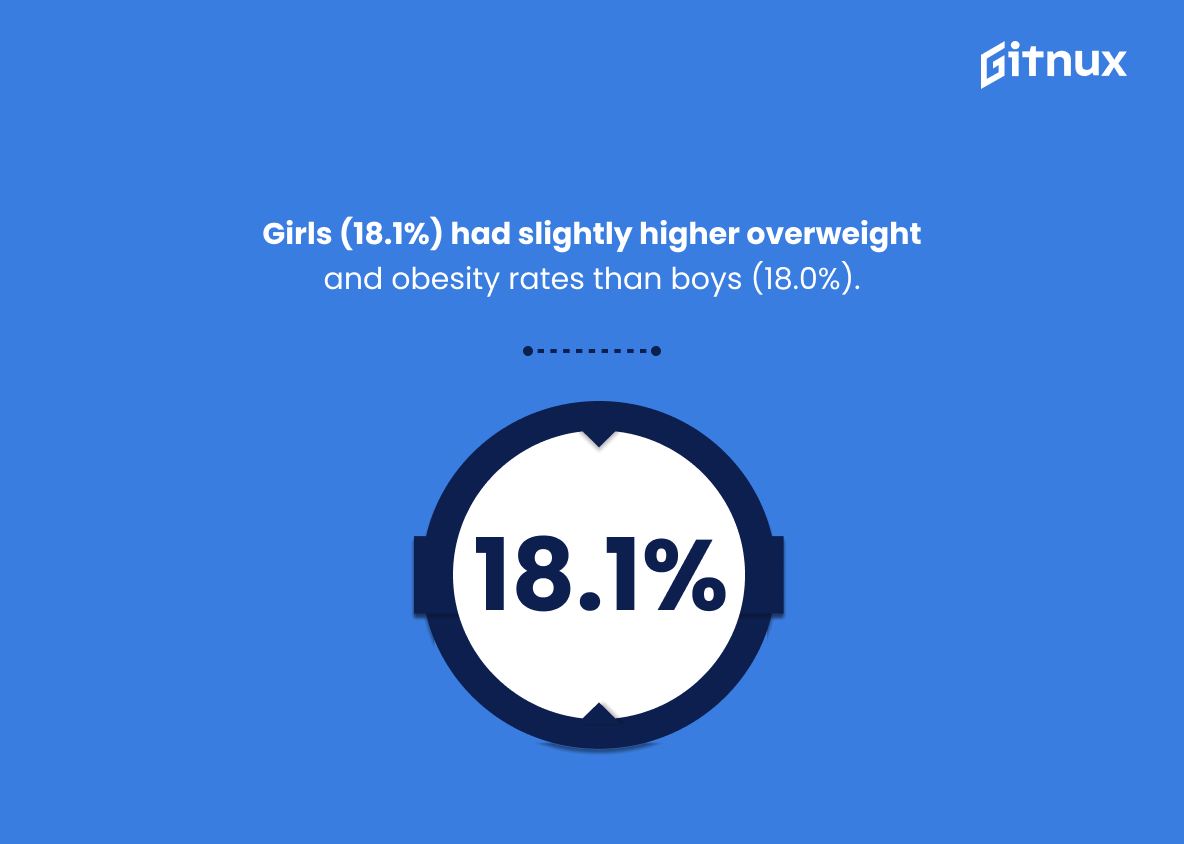Childhood obesity is a growing problem in the United States and around the world. It is estimated that more than one-third of children and adolescents in the U.S. are overweight or obese. This alarming statistic has serious implications for the health and wellbeing of our children.
In this blog post, we will explore the latest child obesity statistics and discuss the potential causes and solutions to this growing problem. We will also look at the potential long-term health consequences of childhood obesity and how we can work together to reduce the prevalence of this serious health issue.
Childhood Obesity: The Most Important Statistics
7 states had youth obesity rates that were significantly higher than the national average, with the highest rates among those in the lowest income group.
12.7%, 27%, and 22.2% of children between the ages of 2-5, 6-11, and 12-19 respectively are obese.
Childhood Obesity: Statistics Overview
150 million children are currently obese worldwide and this number is expected to rise to 206 million by 2025.
This statistic is concerning as it highlights the increasing prevalence of child obesity worldwide. This is a major public health issue, as childhood obesity is linked to a number of major health issues, such as type 2 diabetes and fatty liver disease. It is important to take action to prevent and reduce the prevalence of child obesity in order to reduce the risk of these health issues.
The prevalence of overweight and obesity among children and adolescents aged 5 to 19 has increased from 4% to 18% between 1975 and 2016. This increase has affected both boys and girls, with 6% of girls and 8% of boys being obese in 2016.
This increase in obesity among children and teenagers is concerning as it can lead to health complications such as diabetes, heart disease, and high blood pressure. It is important to address this issue in order to ensure that children and teenagers are living healthy and active lifestyles.
14.7 million kids and teenagers in the US are affected by a 19.7% obesity prevalence rate, with higher rates among younger age groups.
This statistic matters because it highlights the significant issue of childhood obesity in the US, which puts kids and teenagers at risk for health problems.
7 states had youth obesity rates that were significantly higher than the national average, with the highest rates among those in the lowest income group.
This matters in the context of Child Obesity Statistics because it shows that income level is a major factor in the prevalence of obesity among youth. This highlights the need for initiatives to reduce obesity among those in lower income groups, as they are disproportionately affected by the issue.
In 2021/22, 12.1% of reception age children were overweight and 10.1% were obese, while 14.3% of year 6 children were overweight and 23.4% were obese.
These statistics are important as they demonstrate the increasing prevalence of obesity among children, particularly in the older age group. This is concerning as obesity can lead to a range of health issues, such as cardiovascular disease, diabetes, and certain types of cancer. It is therefore important to take steps to reduce the prevalence of obesity in children, such as providing healthy food options and promoting physical activity.
Obesity rates among elementary school students decreased in 2021/22.
This decrease in obesity rates among elementary school students is important because it shows that efforts to reduce childhood obesity are having a positive effect. It is also encouraging to see that the rates of obesity are decreasing in both younger and older children, which suggests that the efforts to reduce childhood obesity are having a lasting impact.
Sex differences in body composition are linked to variations in child and teenage obesity prevalence.
This statistic is important in the context of Child Obesity Statistics because it highlights the need to consider sex differences when examining the prevalence of obesity in children and teenagers. It also suggests that the causes and effects of disparities in obesity prevalence between boys and girls need to be further studied in order to better understand the factors that contribute to the prevalence of obesity in children and teenagers.
Non-Hispanic Black girls and Hispanic boys have the highest rates of obesity, while Asian non-Hispanic children have the lowest rates.
This statistic is important because it highlights the disparities in obesity rates among different racial and gender groups. This information can be used to inform public health initiatives and policies that target the groups with the highest rates of obesity in order to reduce the prevalence of childhood obesity.
12.7%, 27%, and 22.2% of children between the ages of 2-5, 6-11, and 12-19 respectively are obese.
This matters in the context of Child Obesity Statistics because it shows that obesity is a growing problem among children and adolescents, and that it is important to take steps to address this issue.
Prevalence of overweight and obesity was higher in girls (18.1%) than boys (18.0%) and increased with age, particularly between the ages of 5.0 and 8.9 years.
This matters in the context of Child Obesity Statistics because it highlights the importance of early intervention to prevent obesity in both boys and girls, but particularly in girls. It also suggests that there may be gender-specific factors that contribute to the prevalence of obesity in children, which should be further investigated.
Conclusion
Child obesity is a growing problem in the United States, and the statistics are alarming. While there are many factors that contribute to this problem, it is clear that parents and caregivers must take steps to ensure that their children are eating healthy and getting enough physical activity.
This can be done through providing healthy meals and snacks, limiting screen time, and encouraging physical activity. It is also important to talk to your child’s doctor about any concerns you may have about their weight. By taking these steps, we can help reduce the prevalence of childhood obesity and ensure that our children are living healthy, active lives.
References
1 – https://childhoodobesityfoundation.ca/what-is-childhood-obesity/statistics/
2 – https://www.who.int/news-room/fact-sheets/detail/obesity-and-overweight
3 – https://www.cdc.gov/obesity/data/childhood.html
4 – https://stateofchildhoodobesity.org/demographic-data/ages-10-17/
5 – https://commonslibrary.parliament.uk/research-briefings/sn03336/
6 – https://digital.nhs.uk/news/2022/decrease-in-obesity-among-primary-aged-children-in-2021-22-latest-statistics-show
7 – https://nutrition.bmj.com/content/early/2020/09/07/bmjnph-2020-000074
8 – https://stateofchildhoodobesity.org/new-data-compares-latest-child-obesity-rates-by-age-gender-and-race/
9 – https://www.singlecare.com/blog/news/childhood-obesity-statistics/
10 – https://onlinelibrary.wiley.com/doi/full/10.1111/apa.16089
